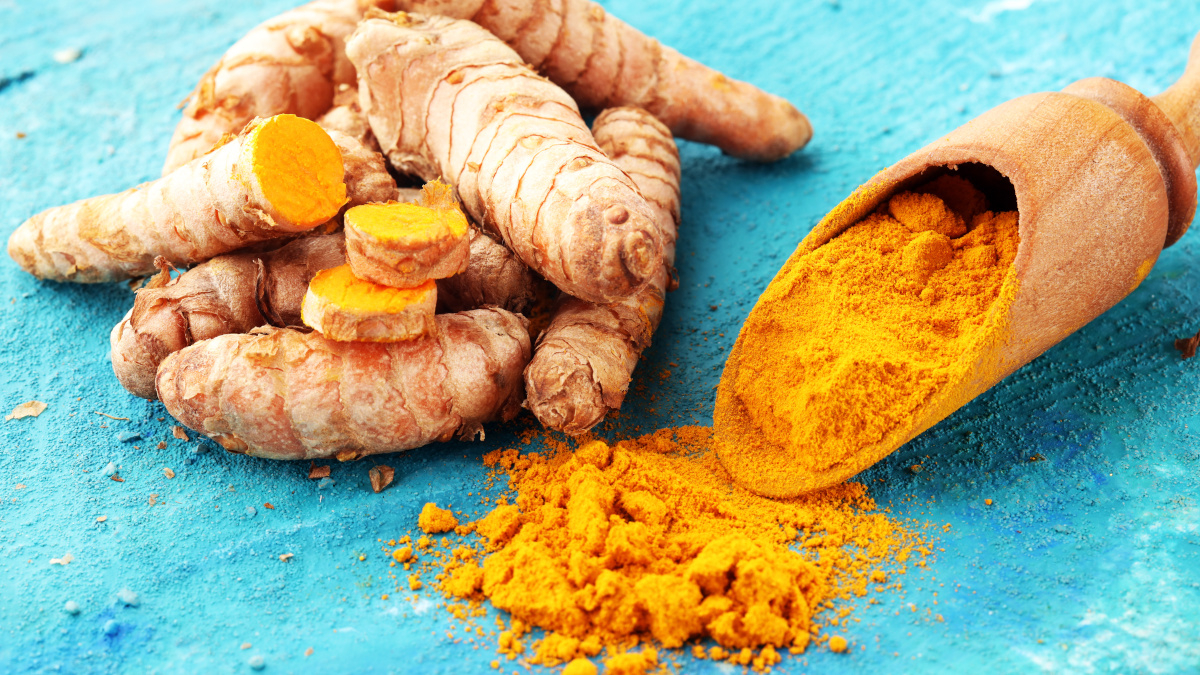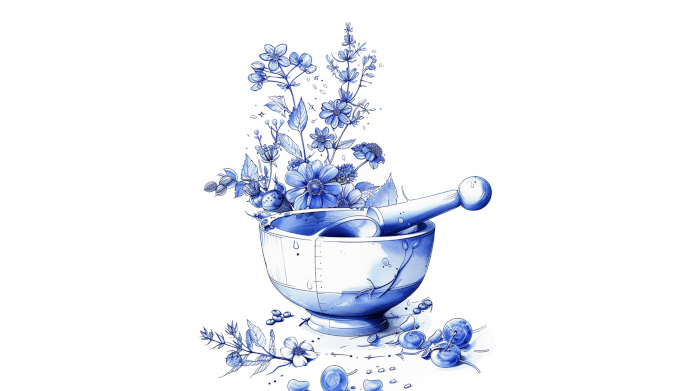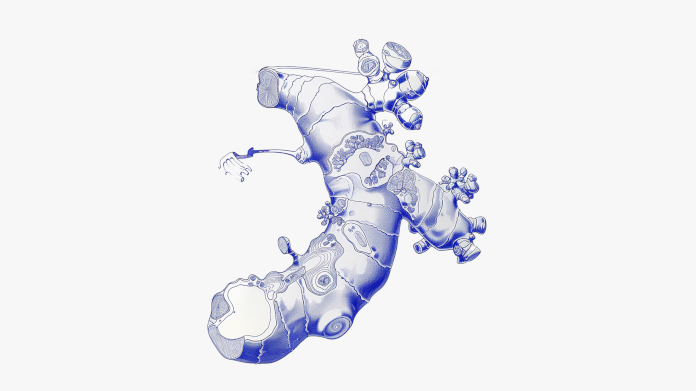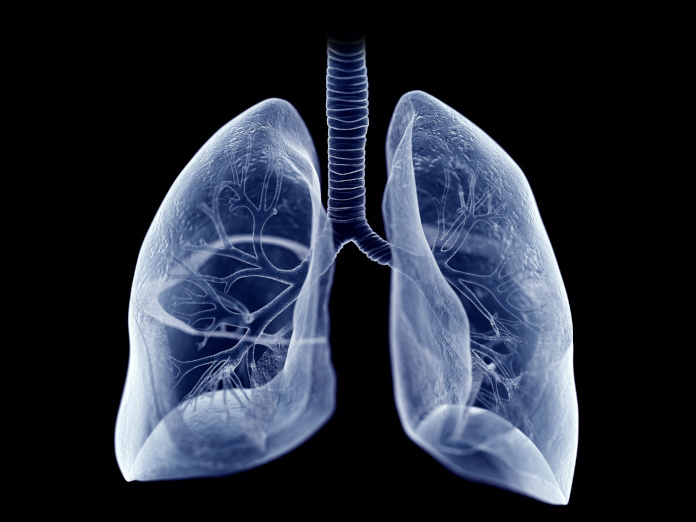
Turmeric: what exactly is it, what benefits does it offer, and what’s the recommended dosage?
A plant that’s been used for thousands of years, turmeric is popular both as a cooking ingredient and as a phytotherapeutic agent. Discover its health virtues and the right dose to take to gain maximum benefit.
Turmeric: an age-old Ayurvedic plant
A key ingredient in curries, turmeric, or Curcuma longa to give it its scientific name, is a perennial plant that grows in the world’s tropical regions. It is part of the zingiberaceae family (1).
Like ginger, to which it is closely related, turmeric is primarily used for its fast-growing roots: the plant’s flowers, however magnificent, are of no culinary or medicinal interest.
Bitter, slightly spicy, light, dry, clarifying and warm, turmeric has been enjoyed as a condiment for thousands of years ... but it also features widely in phytotherapy. Like many Asian spices, it frequently crops up in Ayurveda, the ancient Indian system of medicine (2).
Tip: if you like to cook with turmeric, choose the fresh root, as it is more fragrant and subtle than the dry powder.
Spotlight on curcumin, its main active ingredient
Curcumin, a phenolic compound with low water-solubility, is the most potent active ingredient in turmeric (3).
As well as giving turmeric its distinctive, warm, ochre-yellow colour, curcumin is largely responsible for its health benefits too. It appears, in particular, to help inhibit a number of harmful molecules (4-5).
Turmeric’s many health benefits
Remarkably versatile, turmeric has important antioxidant properties (6). It also helps to:
- maintain an effective immune system and resistance to allergies (7);
- support nervous system function (8);
- maintain a healthy liver, stimulate appetite, prevent the accumulation of fat and facilitate its elimination via the liver (9-10);
- maintain healthy lungs and upper respiratory tract (11) ;
- support the formation and quality of blood, and healthy circulation(12) ;
- and maintain healthy skin (13).
Turmeric: what dose should you take for maximum benefit?
A daily dose of between 1500 mg and 3000 mg turmeric powder is generally recommended. In terms of herbal teas, drink two cups a day, infusing 1000-2000mg of turmeric in 15cl of boiling water for 15 minutes. Be aware, however, that turmeric has poor bioavailability.
An easy way of increasing your turmeric intake is to take a course of dietary supplements in capsule form (we recommend up to 2500 mg of turmeric a day):
- you could, for example, opt for micronized curcumin, a form of delivery which ensures good absorption in the blood, with Curcumin Solution (14). Take two capsules a day;
- a very popular supplement, Natural Curcuma offers a high curcumin content, compensating for the low bioavailability of this valuable polyphenol. Take 5 capsules a day;
- Or there’s Super Curcuma, which combines standardised curcuminoids with natural phosphatidylcholine for optimal absorption (15). Take 2 capsules a day.
It’s best to take these supplements with food, as turmeric is absorbed better with fat. So there you have it – all the key information on this amazing Ayurvedic spice. If you’ve been struck by the unique characteristics of this medicinal root, it simply remains for us to wish you happy turmeric supplementation!
References
- LEONG-ŠKORNIČKOVÁ, J. A. N. A., ŠÍDA, OTAKAR, WIJESUNDARA, Siril, et al. On the identity of turmeric: the typification of Curcuma longa L.(Zingiberaceae). Botanical Journal of the Linnean Society, 2008, vol. 157, no 1, p. 37-46.
- GOEL, Ajay, KUNNUMAKKARA, Ajaikumar B., et AGGARWAL, Bharat B. Curcumin as “Curecumin”: from kitchen to clinic. Biochemical pharmacology, 2008, vol. 75, no 4, p. 787-809.
- AKRAM, Muhammad, SHAHAB-UDDIN, Ahmed A., USMANGHANI, K. H. A. N., et al. Curcuma longa and curcumin: a review article. Rom J Biol Plant Biol, 2010, vol. 55, no 2, p. 65-70.
- HE, Yan, YUE, Yuan, ZHENG, Xi, et al. Curcumin, inflammation, and chronic diseases: how are they linked?. Molecules, 2015, vol. 20, no 5, p. 9183-9213.
- https://www.has-sante.fr/jcms/c_2911396/fr/helicobacter-pylori-recherche-et-traitement
- JAYAPRAKASHA, Guddadarangavvanahally Krishanareddy, RAO, L. Jaganmohan, et SAKARIAH, Kunnumpurath K. Antioxidant activities of curcumin, demethoxycurcumin and bisdemethoxycurcumin. Food chemistry, 2006, vol. 98, no 4, p. 720-724.
- JAGETIA, Ganesh Chandra et AGGARWAL, Bharat B. “Spicing up” of the immune system by curcumin. Journal of clinical immunology, 2007, vol. 27, no 1, p. 19-35.
- CONCETTA SCUTO, Maria, MANCUSO, Cesare, TOMASELLO, Barbara, et al. Curcumin, hormesis and the nervous system. Nutrients, 2019, vol. 11, no 10, p. 2417.
- RIVERA‐ESPINOZA, Yadira et MURIEL, Pablo. Pharmacological actions of curcumin in liver diseases or damage. Liver International, 2009, vol. 29, no 10, p. 1457-1466.
- PANAHI, Yunes, KIANPOUR, Parisa, MOHTASHAMI, Reza, et al. Curcumin lowers serum lipids and uric acid in subjects with nonalcoholic fatty liver disease: a randomized controlled trial. Journal of cardiovascular pharmacology, 2016, vol. 68, no 3, p. 223-229.
- LIANG, Zhaofeng, WU, Rui, XIE, Wei, et al. Curcumin reverses tobacco smoke‑induced epithelial‑mesenchymal transition by suppressing the MAPK pathway in the lungs of mice. Molecular Medicine Reports, 2018, vol. 17, no 1, p. 2019-2025.
- AWASTHI, Himani, TOTA, Santoshkumar, HANIF, Kashif, et al. Protective effect of curcumin against intracerebral streptozotocin induced impairment in memory and cerebral blood flow. Life sciences, 2010, vol. 86, no 3-4, p. 87-94.
- THANGAPAZHAM, Rajesh L., SHARMA, Anuj, et MAHESHWARI, Radha K. Beneficial role of curcumin in skin diseases. In : The molecular targets and therapeutic uses of curcumin in health and disease. Springer, Boston, MA, 2007. p. 343-357.
- SCHIBORR, Christina, KOCHER, Alexa, BEHNAM, Dariush, et al. The oral bioavailability of curcumin from micronized powder and liquid micelles is significantly increased in healthy humans and differs between sexes. Molecular nutrition & food research, 2014, vol. 58, no 3, p. 516-527.
- ANAND, Preetha, KUNNUMAKKARA, Ajaikumar B., NEWMAN, Robert A., et al. Bioavailability of curcumin: problems and promises. Molecular pharmaceutics, 2007, vol. 4, no 6, p. 807-818.
Keywords
5
Great
The efficient delivery.
CLA VOETS
6 Days
Great service
Great service items dispatched straight away and arrived on time
M***** G***
10 Days
A good webshop for supplements
A good webshop for supplements, it has a large selection of them and considering the quality, the pricing offers good value for money. The ordering process is easy and the products are sent straight away.
Maurice
12 Days
Great quality
Products are of great quality and fast delivered.
Fred Laan
13 Days
SuperSmart destaca por la calidad de…
SuperSmart destaca por la calidad de sus productos.
GONZALEZ PALACIN Luis
14 Days
snelle levering,perfect product.
snelle levering,perfect product.
robert
14 Days
Been a customer for over 15 years and…
Been a customer for over 15 years and find their products along with the service excellent. I recommend Super Smart to all my friends.
Del Chandler
15 Days
Excellent product and service
The product was excellent and so were the delivery and the service
F. Ferlitz
17 Days
Never an issue ordering
Never an issue ordering. Simple and to the point. And product always comes the following day. Quality is great too!
Andrea
18 Days
Excellente service & products with rare…
Excellente service & products with rare revelation supplements I love ❤️
Giovanna Escalera
19 Days
Fast shipping
Fast shipping, products as ordered!
Coindozer
19 Days
The item arrived on time and is what…
The item arrived on time and is what was stated in the order.
HARDY Chris
22 Days
Very good products
Very good products. Very reliable. Quick delivery.
MIFSUD Joseph
26 Days
Fast shipping
Fast shipping, good products (just shipping costs to my country are extremely high).
Tanja Matko
27 Days
Many thanks.
Many thanks.
Alan



